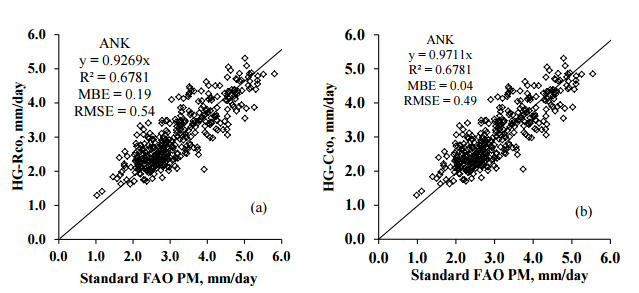Comparison of Estimation Methods for Daily Reference Evapotranspiration under Limited Climate Data in Upper Northern Thailand
Main Article Content
Abstract
Reference evapotranspiration (ETo) is the evapotranspiration of a reference crop (hypothetical grass) growing on a reference surface with perfect management conditions for growing. Accurate estimation of ETo values is a key success factor for the implementation of effective agricultural production and irrigation water management in the upper northern Thailand region. The FAO Penman-Monteith method (FAO PM) is recommended as the standard method to estimate ETo by using climatic data such as air temperature (Tmax and Tmin), humidity, wind speed, solar radiation and other derived parameters. As weather stations in the upper northern Thailand have been recording only daily air temperature; therefore, there is a need to evaluate alternative methods of ETo estimation for the region. This study aimed to compare three alternative methods, namely, reduced FAO PM, Hargreaves, and Thornthwaite methods, to validate and explore the suitable methodologies under limited local climatic data. The daily climatic data set of a highland, Angkhang (ANK), and a lowland site, Chiang Mai University (CMU), were used in the study. The results showed that the ETo estimated using the reduced FAO PM method had the lowest error, with 0.5 m/s of wind speed. For the Hargreaves and the Thornthwaite methods, the good results were found by adjusting the calibration coefficient.
Article Details
Published articles are under the copyright of the Environment and Natural Resources Journal effective when the article is accepted for publication thus granting Environment and Natural Resources Journal all rights for the work so that both parties may be protected from the consequences of unauthorized use. Partially or totally publication of an article elsewhere is possible only after the consent from the editors.
